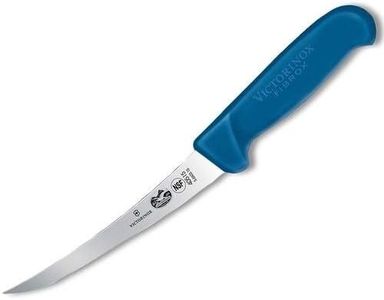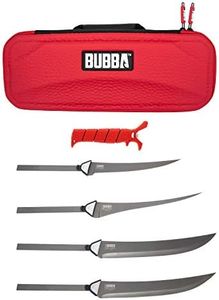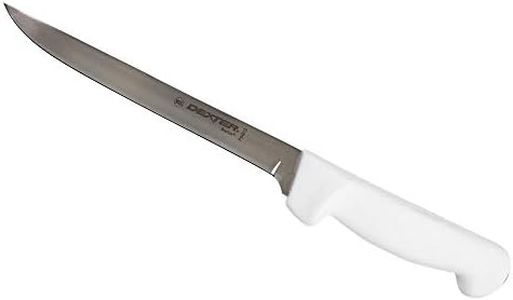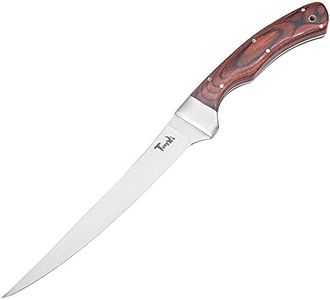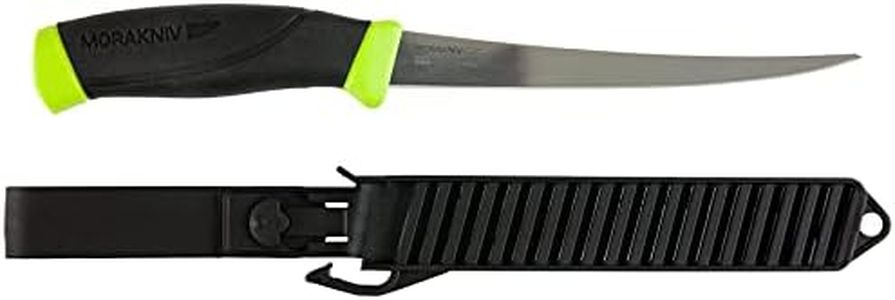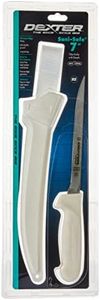We Use CookiesWe use cookies to enhance the security, performance,
functionality and for analytical and promotional activities. By continuing to browse this site you
are agreeing to our privacy policy
10 Best Fishing Knives
From leading brands and best sellers available on the web.By clicking on a link to a third party's website, log data is shared with that third party.
Buying Guide for the Best Fishing Knives
Choosing the right fishing knife is an important step for anyone who enjoys fishing, whether you're a beginner or an experienced angler. The right knife will help you clean and prepare your catch efficiently and safely. When picking a fishing knife, focus on factors such as the knife's size, the type of blade, material, handle comfort, and ease of maintenance. Thinking about where and how you will use the knife—at the shore, on a boat, or for different fish sizes—can help you decide on the most suitable features for your needs.Blade LengthBlade length refers to how long the cutting part of the knife is. A shorter blade (around 4-6 inches) offers better control and is good for cleaning small to medium fish. Longer blades (7-9 inches or more) make it easier to fillet bigger fish with smoother strokes. If you mostly catch smaller fish or need more precision, a shorter blade is better. If you regularly deal with large fish, a longer blade will save you time and effort.
Blade MaterialBlade material usually means either stainless steel or high-carbon steel. Stainless steel resists rust and is easier to maintain, making it a great choice if you'll use your knife in wet conditions or saltwater. High-carbon steel blades are sharper and easier to re-sharpen, but they can rust if not cared for. If convenience and low maintenance are important, stainless steel is ideal. If you want a super sharp edge and don't mind some extra cleaning, high-carbon steel could be right for you.
Blade FlexibilityBlade flexibility is about how much the blade bends during use. A flexible blade is useful for filleting fish because it follows the bones more easily, giving you clean cuts. A stiffer blade provides more strength for tougher jobs like cutting through bones or tougher skin. If you mostly fillet delicate fish, go for a more flexible knife. If you need to do some heavier cutting, a stiffer blade is better.
Handle Comfort and GripHandle comfort and grip are about how the knife feels in your hand and how easily you can hold onto it when it's wet or slimy. Handles are often made from rubber, plastic, or wood. Rubber and textured plastic handles offer better grip, especially in wet conditions, and are often easier to clean. A comfortable handle reduces hand fatigue during long cleaning sessions. Try to choose a handle shape and material that feels secure and comfortable for your hand size and the way you hold a knife.
Sheath or Blade ProtectionA sheath is a protective cover for your knife. This is important for safety and for keeping the blade sharp and clean during transport or storage. Some sheaths have drain holes to prevent water buildup. If you'll carry your knife with you or store it in a tackle box, a well-made sheath will protect both the blade and your hands.
Ease of Cleaning and MaintenanceEase of cleaning means how simple it is to keep your knife clean and free from odors or rust. Knives with fewer grooves or seams in the handle are generally easier to wash. Stainless steel blades are less likely to rust than carbon steel, and some handles are even dishwasher-safe. If you'll use your knife frequently or in saltwater, opt for materials and designs that are easy to rinse and dry.
